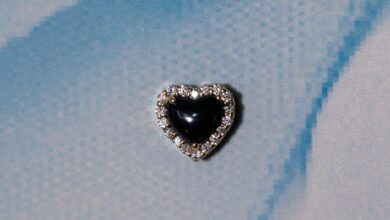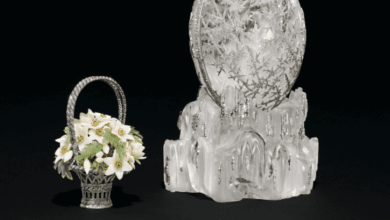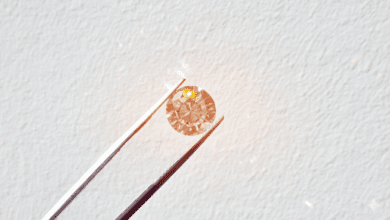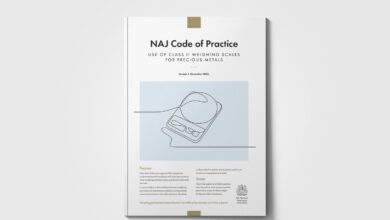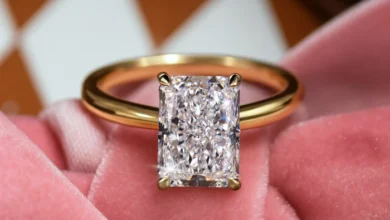ARCHIVE: London Diamond Bourse – ‘No ordinary trading floor’
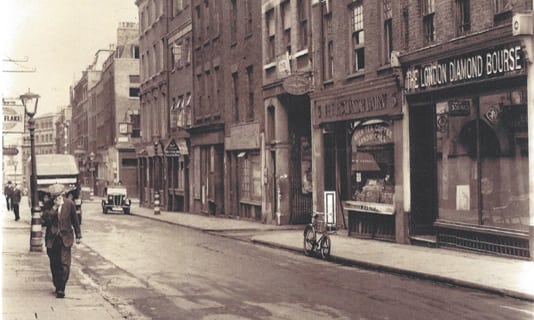
Register to get 1 free article
Reveal the article below by registering for our email newsletter.
Want unlimited access? View Plans
Already have an account? Sign in
It is said that 85 per cent of the UK’s imported diamonds go through the London Diamond Bourse. The first journalist allowed through its doors in 20 years, Michael Northcott finds out what goes on behind those security gates.
As exclusive clubs go, this is an unusual one. The mere fact that it has had no dealings whatever with the media for decades is testament to how closely its operations are guarded, and it’s no surprise: the place is seething with one of the most valuable commodities on earth.
It’s not the most conspicuous building on London’s Hatton Garden; indeed, it is only one of a considerable number of other jewellery-related outfits in a large office building. Nonetheless, you can’t even get to the stairs without knowing someone on the inside. Thankfully, Victoria McKay, the Bourse’s operations manager, has pre-warned the pass-card-dispensing lady on the front desk to expect me.
Two heavy-duty, full-height, security turnstiles and a flash of my driver’s licence later, I’m whisked through a labyrinthine set of corridors into McKay’s office, which sits adjacent to the trading floor itself. It’s as though instead of conducting an interview, I must be grilled before I can be presented more openly to the suspicious faces of the traders who have not had a ‘media type’ in their midst since the early ‘90s.
Thus some rumination on the history of the place began. The London Diamond Bourse was established in 1940 as a direct consequence of the Nazi occupation of Belgium. Amongst those that managed to reach Britain as refugees were a number of diamond merchants, whose stones were the smallest thing with the greatest value that they could carry. Antwerp had been the global diamond capital, but with fascists seizing property and merchants fleeing the continent, inevitably it became unviable.
Need for a new centre in London became apparent as many of the merchants were doing their deals on the streets in the Hatton Garden area. One Mrs Cohen, who owned a café on the adjoining Greville Street, opened her doors to the trade and despite the cramped and basic facilities, the new organisation became successful using the café as a base. President the late Max Lack, who was elected in the earliest iteration of the Bourse, became honorary Life President in 1982.
In the remaining years of the war, the membership grew to include many who had fled concentration camps and who had lost all of their property – many had also missed out on the opportunity to receive formal education, and so joined their friends and family members in the London outfit.
The years ticked by and as the memberships continued to burgeon, a new building was constructed in Hatton Garden to house the Bourse – at its height in the 1980s there were around 700 members.
MEMBERSHIP & CULTURE
Today the Bourse has around 270 members, housed in 100 Hatton Garden on a whole floor, many of them the descendants of the original group. But how do you get in? McKay explains that anyone with an established record as a diamond dealer can be a member, but the vetting process is stringent. “You have to be proposed and seconded by existing traders, and if you happened to be in the industry and do not know anyone in the bourse,” which she hints is rare, “we would take trade references.” McKay stresses that this cannot be a reference from “some little shop” without a reputation for good business.
Being a member of the Bourse comes with a huge expectation of trust: “Here, a handshake is still an agreement of contract,” says McKay, “and you will see people say ‘OK, shake on it’, and the other will say ‘No!’ because they know that to go back on a promise will damage your reputation and no-one will deal with you again.”
It’s not just the sanctity of the handshake that makes member play ball, however. Lewis Malka is the youngest member of the Bourse’s executive board, and says a dishonest trader “will not last two minutes in the diamond industry”. “If you do swindle someone, we’re all trading with other traders. There’s a code of ethics, which you sign up to when you join, and if you break it, there’s no way you’re going to be able to trade. It’s a very tight-knit community: if I don’t know someone, someone else will.”
The London Diamond Bourse encourages all traders to become a member of the World Federation of Diamond Bourses, which gives them access to other trading floors around the world. Malka continues: “If you’ve done something unscrupulous and been caught out, your photo will go up on the board in all the bourses around the world and it will stay up indefinitely – there’s no way you’re going to be able to trade.”
Worth noting is that the Bourse has its own arbitration process to deal with disputes between traders. According to Malka, if anyone gets uppity at the decision in house and tries to kick it upstairs to the High Court, not only will it be thrown out by a judge (because of lack of paperwork), but the courts system tacitly recognises the Bourse’s superior knowledge on the inner workings of the diamond industry. As such, Malka claims, courts will say: ‘We’re not getting involved.’
Methods of ensuring against such “unscrupulous” in house individuals are as traditional as you might expect. The Bourse’s president, 75-year-old Harry Levy, first joined the Bourse 50 years ago, and his son is also a member. Levy explains: “In the past it has been very strict – applicants must have been in business for a number of years and be well established. A way of getting in is to come in on a family member’s coat tails. You are fast tracked in a way because we assume the preceding member of their family will supervise them.” He hints that if a son comes in and says ‘I want nothing to do with my dad’, then alarm bells may well be raised: trust is everything.
THE SCALE & THE ENVIRONMENT
Malka says that, unlike what most people might expect from a trading floor (a la stocks brokers and City boys), it is rather different in the Bourse. “The stereotype in people’s heads in the stock market trading floor where it’s buzzing and it’s all going nuts. Here we actually have to work with physical goods in a big open office. People are dealing internationally, and people are dealing locally. It could be a retailer saying ‘I’ve got a client interested in a 1.5ct GVS’, or it could be manufacturers abroad saying ‘I need 2,000 carats of small mille diamonds’ for their new mass produced product.”
Indeed, the trading floor is not the hive of activity that Gordon Gekko would be accustomed to. It’s quiet (almost silent, actually), and nobody is screaming numbers into a phone. Groups of people calmly huddle around desk areas (adorned with bright lights on extendable arms) and simply discuss the stones. Many are sitting alone, armed with loupe and tweezers, and there is absolutely no sense of hubbub. The adjoining boardroom, diagonally opposite McKay’s office, is a modest arrangement, with framed sepia photographs of socials and events of the ‘50s and ‘60s adorning the walls. McKay proudly shows me a photograph of a time when Queen Elizabeth visited. She looks rather younger.
One senses that the quietness and decorum is a function of the traders’ confidence in their own expertise and business nouse. Nobody appears to be competing for attention or projecting an alpha persona to ‘own’ the room. When I point this out, Malka takes to opportunity to wax lyrical about the knowledge level that one must possess to ‘get in’ to diamond trading: “There’s a reason they’re the only commodity that’s not listed on the stock market for people to buy and sell. And that’s because at the end of the day, you have to sit down, look at the diamond, and find out where the inclusions are, how the stone is cut. There are so many variables in the diamonds that you’ve got to see the stone: that’s why they’re not on the stock market.”
THE FUTURE
The London Diamond Bourse is a not-for-profit organisation, and the (undisclosed) annual fee for members is spent only on keeping the thing running. But with 430 fewer members now than in its heyday, something presumably has to change. McKay, who only took up the operations manager role in 2012, appears to be that modernising influence. Her predecessor was in post for 30 years, and as previously mentioned, had no truck with the media – not even the jewellery trade press. McKay has plans to attract more members through a revamped website and getting exposure to the consumer press, too.
Shouting a bit louder about the Bourse will only be one facet of a recruitment drive, but at least the attitude is right. McKay concedes that many people are not even cognisant that the Bourse exists; president Levy says he wants to see it made “friendlier”, and Malka says: “Being in London, it is easy to forget that there are thousands of retailers outside of the capital, and they could easily find that it could be a great tool for their business.”
This article first appeared in the December 2013 edition of Jewellery Focus. Interviews by Michael Northcott.


